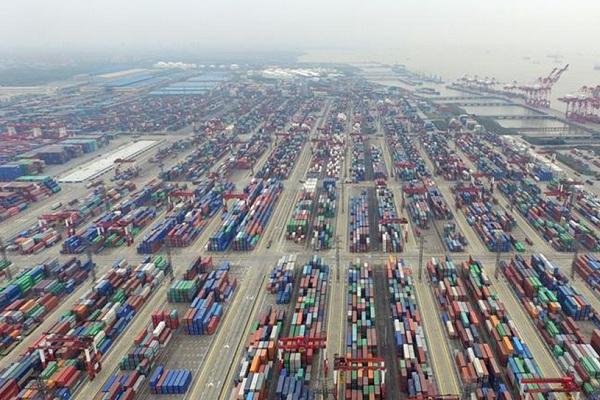
[Photo/Xinhua]
BEIJING — China’s exports stabilized in June while imports recorded a slight contraction, according to new data, but a customs official warned of a dim outlook as weak demand both at home and abroad has continued to weigh on trade.
Exports in yuan-denominated terms rose 1.3 percent year on year in June, slightly higher than the 1.2-percent growth seen in May, according to figures released by the General Administration of Customs (GAC) on July 13.
They showed imports dropped 2.3 percent last month, a sharp reversal on the 5.1-percent increase registered in May.
As a result, China’s trade surplus stood at 311.2 billion yuan ($46.4 billion), narrowing slightly from that in May but 12.8 percent more than a year before.
Foreign trade in the first half of 2016 was 3.3 percent lower than a year earlier at 11.13 trillion yuan, with exports down 2.1 percent and imports down 4.7 percent.
Trade surplus for the first six months widened 5.9 percent year on year to 1.67 trillion yuan.
GAC spokesperson Huang Songping said that based on leading indicators, China’s exports may face “relatively big downward pressure” in the third quarter as global demand looks set to remain sluggish.
“The world economy still faces many uncertainties. For example, Brexit, expectations of an interest rate hike by the Federal Reserve, volatile international financial markets, the geopolitical situation and terrorism, will all affect consumers’ and investors’ confidence globally and weigh on international trade,” Huang said.
China’s trade situation will remain grim and complex this year, he said.
Huang noted that the country’s exports are losing some of their edge as re-industrialization trends in developed countries with advanced manufacturing capacities and mushrooming lower-cost manufacturers in emerging nations have exerted double pressure on China.
Export order readings for both the official and Caixin purchasing managers’ index are slightly below 50, the boom-bust line, pointing to a continued moderate contraction in overseas demand.
Meanwhile, the risk of Brexit aftershocks will add to the gloom on the export outlook, said Tom Orlik, Bloomberg’s Chief Asia Economist.
To help foreign trade companies, Huang Songping said China would continue to implement support policies and encourage companies to improve productivity, lower costs and come up with innovative products.
China’s exports to the European Union, the country’s biggest trade partner, climbed 1.3 percent year on year in the first half, GAC data showed.
In the same period, exports to the United States, China’s second-biggest trade partner, declined 4.6 percent and exports to the ASEAN, its third-largest trade partner, fell 2.9 percent.
In US dollar-denominated terms, China’s exports fell 4.8 percent year on year in June, while imports were down 8.4 percent.
